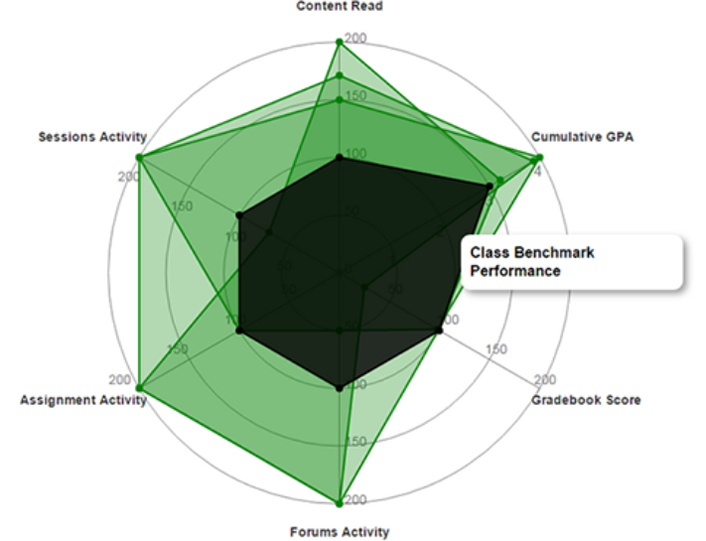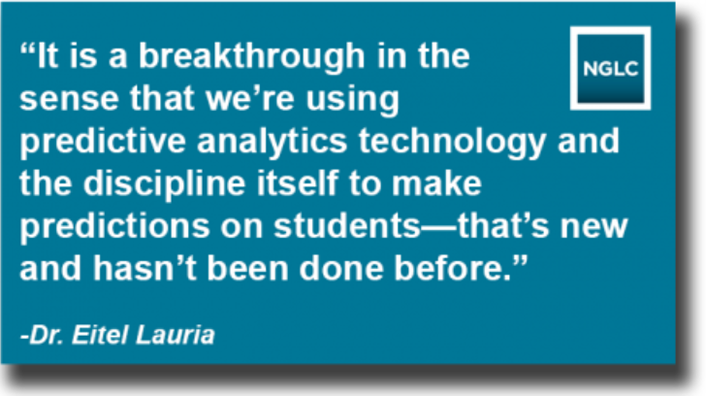
As we usher in 2016, big data and greater connectivity continue to offer a tremendous amount of promise across many fields. In education, they can mean the difference between students succeeding or struggling to keep pace in college—or worse, dropping out altogether.
Today, we have capabilities to view and track academic progress as never before; we have tools that can even provide visibility into forthcoming pivotal moments, at a point when students’ veering off-course can actually be prevented. And as the emerging field of learning analytics grows, so does its exponential impact.
The field has advanced quickly.
Predictive Modeling in Higher Ed
What began as a pioneering open source platform on one campus has been made part of a broader learning analytics initiative—one that has been selected to serve as the reference framework for institutional members of JISC, the UK’s preeminent higher education IT association.
Marist College and its partners in the Apereo Learning Analytics Initiative were also recently recognized by Eduventures for its "Creative Use of Technology" to improve student success via its open-source learning analytics platform, which provides institutions with a cost-effective academic early alert and intervention system.
The project, which started during the 2011–12 academic year under the Open Academic Analytics Initiative (OAAI), was funded by a Next Generation Learning Challenges grant.

Dr. Eitel Lauría serves as professor and graduate director at Marist's School of Computer Science & Mathematics, and was appointed OAAI’s lead data scientist. He has been responsible for designing the original analytics framework and predictive models that make up the platform’s early detection mechanisms.
“This is not my field; I’m a computer scientist…a data scientist,” Lauria said. “When the OAAI project started, the field of learning analytics was completely incipient—nonexistent—it piqued my interest because it was a natural evolution in the aftermath of business intelligence and data mining.”
Harnessing Tech for Meaningful Impact
“Businesses seemed to be applying data in ways that’d have a big impact; we believed that higher education could, too.”
Much like a traffic light, the dashboard initially used green, yellow and red alerts to indicate potential issues based on a variety of student data. (It has since evolved to include blue as an indicator of ‘medium risk’.) Its APIs can integrate with a variety of tools that handle data collection to storage to reporting.
The open source aspect makes the platform more accessible than any commercial tool on the market, which means that all kinds of information, from demographic to behavioral data, LMS reports, previous performance, and current grades, can produce reasonably accurate predictions just a few weeks into a semester. (Although Lauria notes that the model ‘can always be enhanced’, as no scientist’s work is never truly done.)
Because of its contributions to the emerging field, Marist College has its place on a global map. “It’s in the mission,” Lauria added. “The use of technology to enhance education on every level. I think it has put us on a global map when it comes to this particular field because we are one of a few institutions that pretty much started the movement.”
It all started with one question: will you get involved? And an answer:
“A new set of challenges opened in front of me, so I thought ‘I’d like to solve this.’”
Editor’s Note: These days, Dr. Lauria and his team are solving even bigger challenges. Since JISC decided to adopt the system, he notes that they’re now actively working to convert its learning analytics platform and early alert system to be able to handle a much wider scale. Moving away from the original platform to Hadoop’s platform will allow the system to handle much more than a single institution at a time.
Kristi DePaul is marketing manager, EDUCAUSE Learning Initiative (ELI) and Next Generation Learning Challenges (NGLC), at EDUCAUSE.
